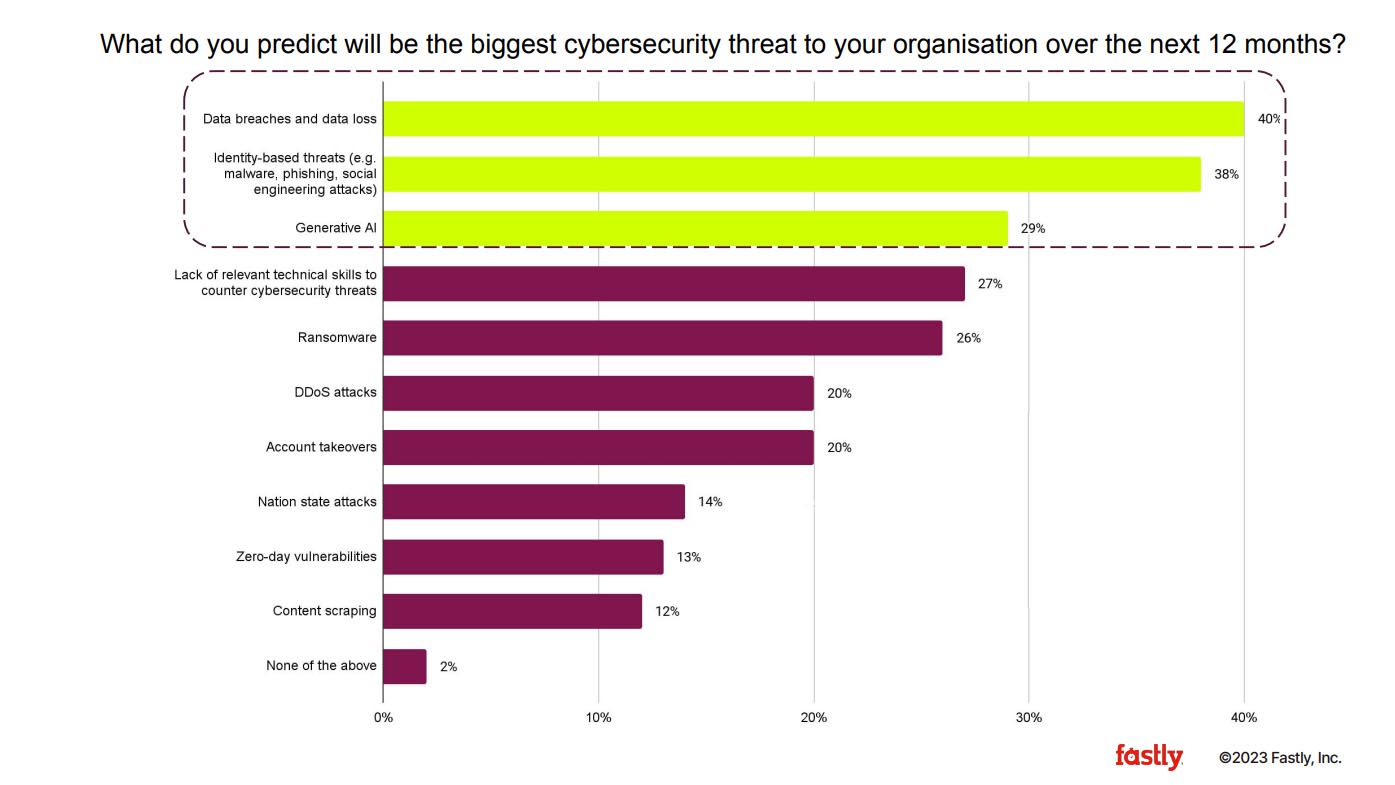
November 17, 2023 at 08:40AM
A report from Fastly reveals that organizations see generative AI as a significant cybersecurity threat. Data breaches, identity-based threats, and generative AI are viewed as the top cybersecurity threats in the next year. Although generative AI is seen as both positive and negative, concerns exist about new attack opportunities and increased risks. Many organizations are worried about their security teams lacking experience with emerging threats like generative AI and are taking steps to mitigate risks through policies and employee training. The top factors driving cybersecurity threats include an increasingly sophisticated threat landscape, attacks on remote workers, lack of internal education, and the emergence of generative AI technologies. perception of these factors vary across industry sectors.
According to the meeting notes, a report from Fastly reveals that many organizations consider generative AI as a growing cybersecurity threat. The top three cybersecurity threats identified for the next 12 months are data breaches and data loss (40%), identity-based threats such as malware and phishing (38%), and generative AI (29%). Interestingly, respondents in the survey had mixed views on generative AI. It was seen as having the potential to increase productivity (43%) and protect against cyber threats (42%), but there were concerns that it could also open new avenues for attacks (67%) and put businesses at greater risk (58%).
A significant finding is that 46% of respondents are concerned that their security teams lack experience in dealing with emerging technologies like generative AI. To address these concerns, organizations are focused on developing and enforcing company-wide policies (34%) and training employees to recognize associated risks (34%).
The IT decision makers surveyed anticipate similar threats to what their organizations faced in the past year to continue in the next 12 months. Factors driving cybersecurity threats in the past year included an increasingly sophisticated threat landscape (35%), attacks targeting remote workers (33%), lack of internal education on cybersecurity best practices (32%), and the emergence of generative AI technologies (32%). Looking ahead, the top three factors expected to drive cybersecurity threats over the next 12 months are an increasingly sophisticated threat landscape (37%), the emergence of generative AI technology (35%), and cyberattacks targeting remote workers (33%).
There were also differences in perception across industry sectors. For example, respondents in the government sector were more likely to cite attacks against remote workers as the main driver of cybersecurity threats over the past year compared to those in the education sector. Additionally, transportation sector respondents expressed greater concern about cyberattacks on remote workers in the next 12 months than those in the government sector.